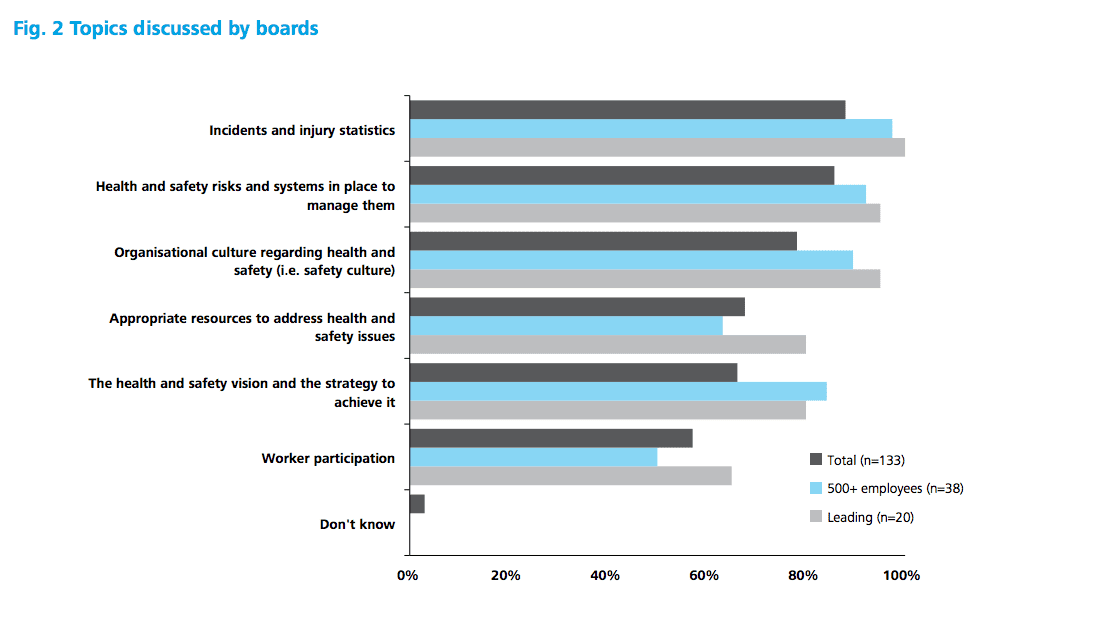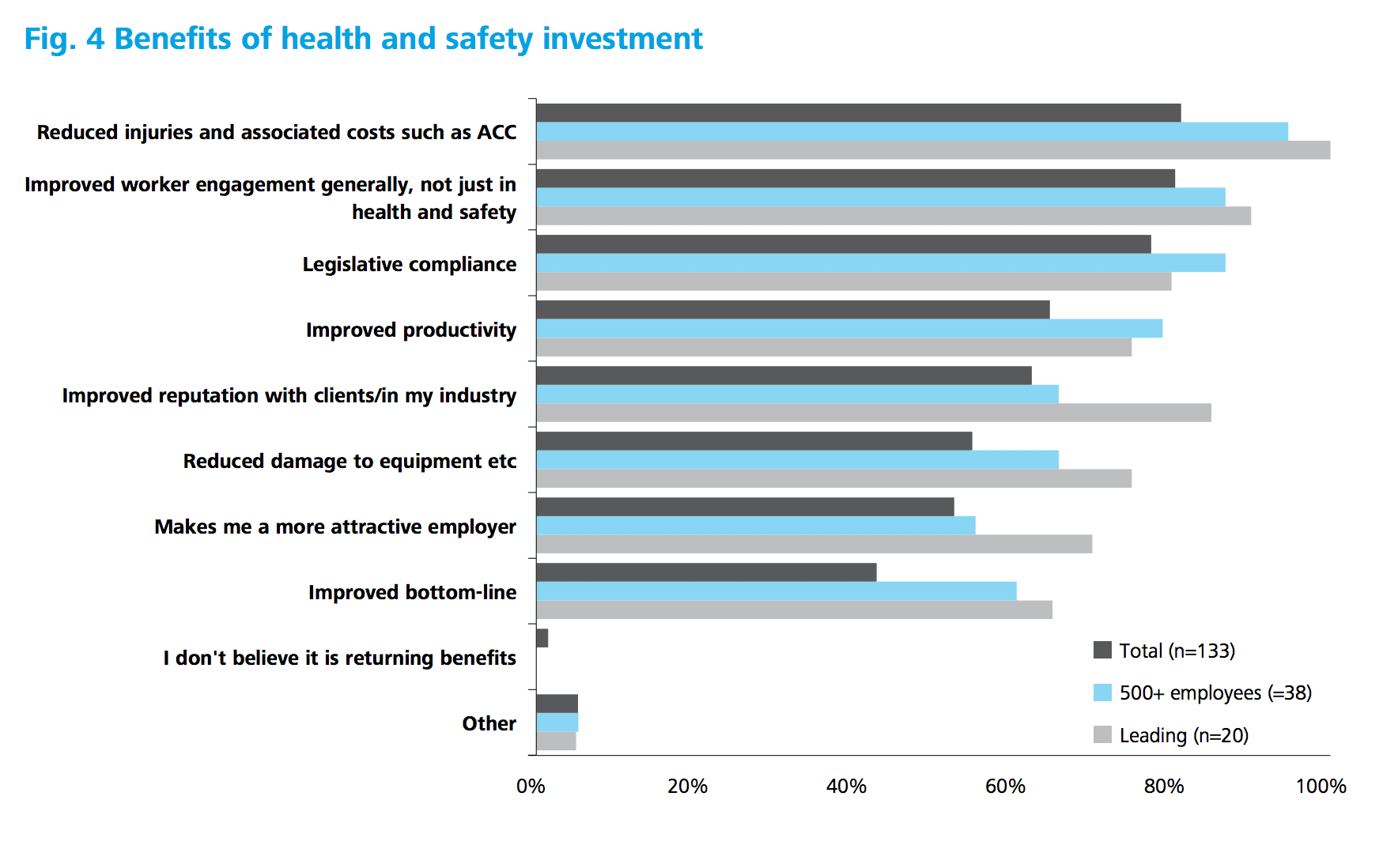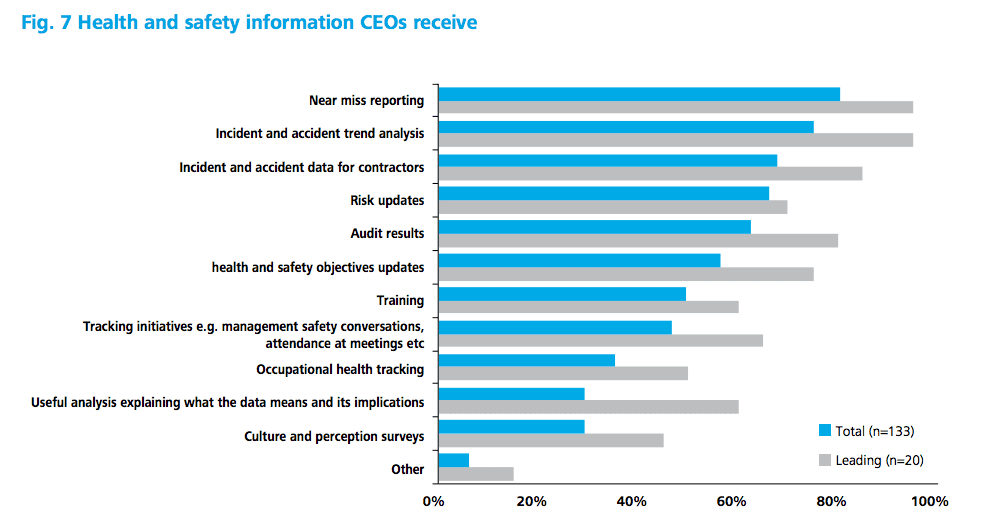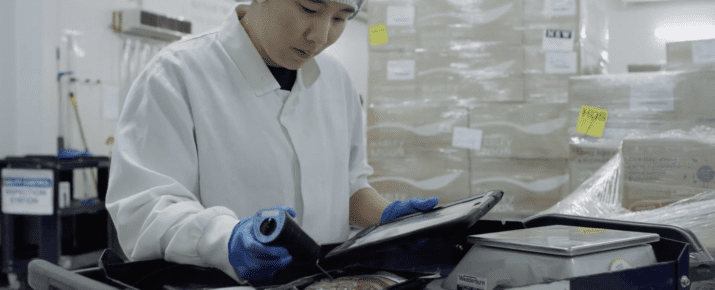Your CEO Has Blindspots in Safety – Here’s How To Help
Checklist Best Practices | By | 31 Mar 2017 | 3 minute read

A CEO (or board member, executive, etc.) is removed from the site. That means they depend on the information that you, the safety director or site manager, provide. In a survey Deloitte conducted of 133 CEOs in New Zealand, respondents showed a high level of interest and dedication to safety programs. They’re also very willing to invest time and money into safety systems and even research so companies can implement best practices. However, the survey also uncovered some huge disconnects that executives experience between field and office.
They need context for all that data you send them
Most CEOs say they receive analytics on safety initiatives, but less than one third say they get meaningful insights attached to the data. The analytics that you’re so painstakingly compiling and charting are necessary but not sufficient for your executive team. Give them context. Explain what the data means, and what the implications are. This is a great opportunity to suggest improvements within the organization. If a piece of equipment is failing pre-task checklists a lot, explain why and how to address the issue. In fact, one third of CEOs say that risks within the organization are not well described. Without a uniform way to speak about risks, it’s impossible to tackle them in an organized way.
Focus on more than just incident stats
Despite this connection between safety and performance, boards and C-suite executives tend to focus on risk management and decreasing incidents, but not on employee engagement. However, employee engagement is a huge driver in safer day-to-day practices. Deloitte identified companies who are “leading” in health and safety. Leading means they treat health and safety as a strategic priority, information is reported publicly, and the decisions the board makes take health and safety into account. In the chart below, you’ll see how discussions amongst board members differ within leading companies.

Companies who perform best in health and safety don’t just talk about incident and injury statistics (though there is that as well). They also discuss organizational culture, employee engagement and potential tools to help employees practice better health and safety behaviors.
Facilitate real conversations
Three quarters of CEOs say some or all of their board members conduct site visits, but less than 60% have informal conversations with site workers. However, those site workers are frequently the ones with the best insights into how to improve processes in the business. If you’re not able to get executives directly in touch with site workers, make sure you’re collecting feedback from them. Package that feedback up and send it up to the executive team. However, those conversations really are most valuable with executives on site. There could be critical variations between what executives believe is happening versus what is actually happening. Workers make decisions on a daily basis as they weigh the tradeoffs between safety and efficiency or simply “getting the job done”. Sometimes that means sites adopt weak processes which will inevitably lead to incidents and a decrease in quality.
Communicate financial benefits
While the main focus for health and safety initiatives is the wellbeing of employees, top employers understand that it has financial implications as well. Make sure you’re communicating any financial wins. These can be directly related to enhanced safety, like decreased incident costs. They can also be less directly correlated. Process improvements lead to safer worksites and more efficient projects, saving a lot of time and money. Make those results abundantly clear in your reporting.

Prioritize the data you share with executives
Leading organizations focus on near miss reporting, incident and accident trend analysis (data), audit results (more data) and useful analysis explaining what data means. There seems to be a theme, which is that data is king. But only if you explain what that data actually means.

Notice that organizations who are leading in health and safety are also taking culture and perception surveys pretty seriously. This method of monitoring culture is already common in many sectors like tech, hospitality and retail. It’ll only gain traction in more health and safety-centric organizations where a safety culture is so important.
Important Notice
The information contained in this article is general in nature and you should consider whether the information is appropriate to your specific needs. Legal and other matters referred to in this article are based on our interpretation of laws existing at the time and should not be relied on in place of professional advice. We are not responsible for the content of any site owned by a third party that may be linked to this article. SafetyCulture disclaims all liability (except for any liability which by law cannot be excluded) for any error, inaccuracy, or omission from the information contained in this article, any site linked to this article, and any loss or damage suffered by any person directly or indirectly through relying on this information.





